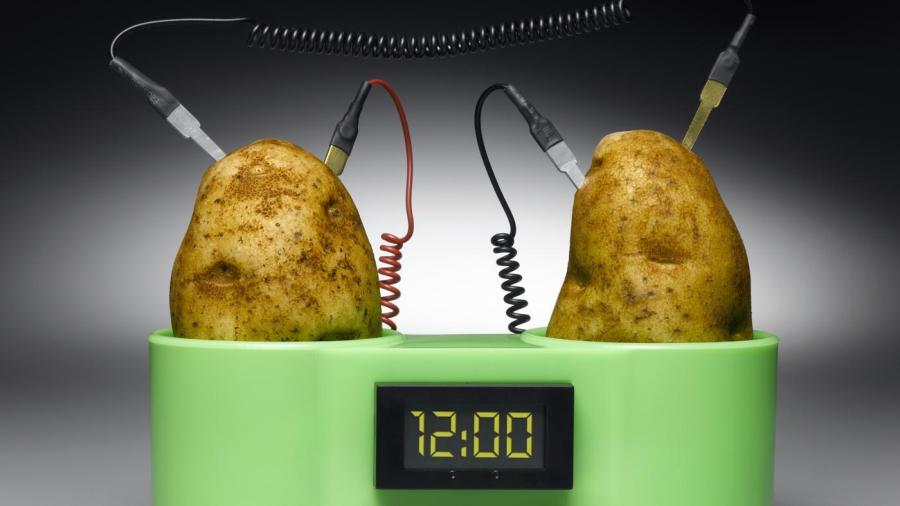How Does a Potato Conduct Electricity?

A potato has the potential to conduct electricity because it is a source filled with electrolytes. These electrolytes act as an electrical conductor which means they allow the flow of electric charges.
The electric current is activated when two specific metallic objects, like a copper penny and a galvanized zinc nail, are inserted into the potato. These metals are important because the electrons move from the zinc material to the copper penny. This phenomena occurs because the electrons are negatively charged and are attracted to the positively charged copper atoms. The potato acts as a facilitator of the electric charge because this item contains sodium, potassium and chloride. The electric current diminishes when oxides accumulate at the copper and zinc sources.
It is possible to use a wide variety of foods like apples or strawberries as conductors because they also contain electrolytes. Lemons and oranges produce a higher charge because they are filled with citric acid. However these food sources are severely limited in their usage and spoil easily. A typical potato usually produces up to 1 volt of electric charge. The electric charges produced within a potato are accumulative with other sources. For example, two potato sources produce twice the electric current as one potato source and so on.





